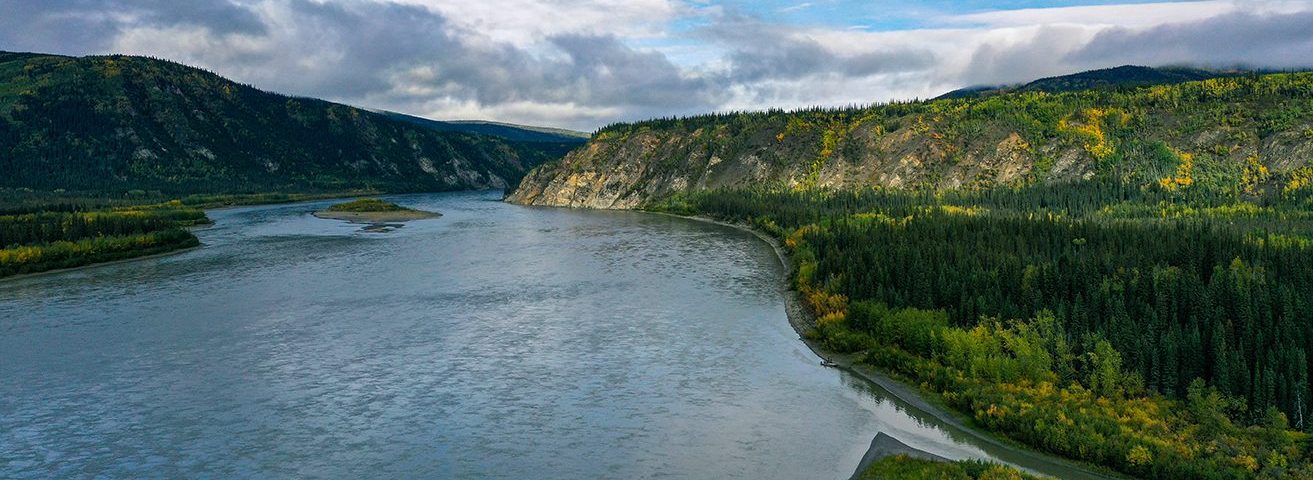Fort Reliance
Fort Reliance is 3.5 kilometres northwest of Jëjik Dhä Dënezhu Kek’it (Moosehide Village) on the east bank of the Yukon River, located within Tr’ondëk Hwëch’in Settlement Land.

In August 1874, traders from the Alaska Commercial Company established a fur trading post here. This was the first colonial establishment to be built within Tr’ondëk Hwëch’in ancestral lands, initiated by one of the Tr’ondëk Hwëch’in leaders, Gàh Ts’yàt (Catsah) who “insisted on the agent building a station near his house.” For several years, Tr’ondëk Hwëch’in people adjusted their yearly activities to trap and provide fur to the trading post in exchange for the newcomer’s desirable goods, in a partnership that was equitable and beneficial to both parties. Fort Reliance operated until 1887 when the discovery of gold on the Fortymile River triggered a rush to the new diggings. The fort’s log buildings were demolished over the next decade.
The physical heritage values at Fort Reliance are entirely archaeological and are characterized by two significant features. The first feature is a site that includes evidence that suggests that this location was used as a camp for a period of more than 1,000 years before present. The second feature is the remains of an ensemble of habitation features and associated artifacts of the trading post. These include remains of housing of indigenous design-semi-subterranean house pits, and buildings that appear to have been built in a colonial “cabin” style, including two larger buildings likely the site of the Alaska Commercial Company store and residence, and residential cabins for other inhabitants of the site. Fort Reliance portrays the early stages of colonization, wherein newcomers and Indigenous people worked and lived cooperatively in a new industry-the fur trade.
